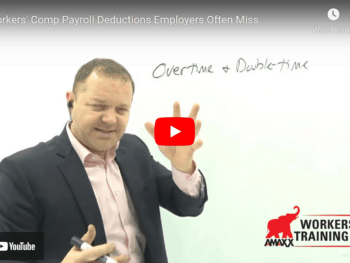The NY legislature has passed a bill changing the maximum and minimum comp rates.
After 5/1/13, the minimum weekly rate on a comp claim will rise from $100/wk to $150/wk.
After 7/1/13, the maximum weekly rate will rise from $792.07/wk to $803.21
Click Link to Access Free PDF Download
“Workers’ Comp Claims Review Checklist: 9 Must-Have, Serious-Impact Elements”
All Employers Will Be Affected By Rate Changes
All employers, whether they pay workers minimum wage, or pay thousands of dollars per week, will be affected by the rise in minimum rates, in ways they may not suspect. The maximum rate will largely affect only employers with workers who average weekly pay exceeds, roughly, $1200/wk.
Employers, however, should be aware of how these rates become important in claims going to final settlement on permanent disability claims. Such settlement account for over 70% of all attorney fees, and lawyers use both the maximum and minimum rates in settlement strategies.
Large Impact on Settlements
A worker receiving the weekly minimum of $150/wk can still negotiate for a final settlement on, roughly $39,000-$50,000 (or more, depending on the ongoing medical costs, up from $26,000), and much lower if the worker is receiving wages plus comp. But the assumption that it only applies to minimum wage workers is entirely false.
At the upper end, the maximum settlements will rise, roughly, from $206,000, plus allowance for medical expenses, to $209,000, plus medical. (Maximum settlement can exceed these limits by $50,000, or more, in certain circumstances.)
Employers paying high end wages should be aware that they have workers that are the clients of preference to comp firms, considering that attorney fees for settlement can exceed $30,000 on their workers settlements.
That answer for employers is a better understanding of what can best lower settlement figures.
Return to Work Is Powerful Defense
The most powerful is an effective return to work plan. If the worker returns to full wages, a settlement is unlikely to occur. The claim will be closed for zero.
But if the worker can be returned to less than full wages, the settlement can be 10%, or less, than the max rate figures.
Employers should be aware that a return to work at lower wages, still entitles the worker to comp. If the worker returns at wages that are $225/wk to $150/wk, the worker is still entitled to the $150/ wk minimum rate. BUT, if the worker returns to work for wages where the reduction is less than $150/wk, the comp rate is the actual difference in wages.
Thus, a worker making $80/wk less than before an accident receives a weekly rate of $80, not the $150 minimum.
To put it succinctly, returning a worker to as high a wage as possible saves the employer impressive amounts on future premiums.
What if the worker is offered a job and refuses, hoping for a max rate settlement? That will be covered in the next piece. And the seemingly over- complicated discussion above will be greatly simplified.
Author: Attorney Theodore Ronca is a practicing lawyer from Aquebogue, NY. He is a frequent writer and speaker, and has represented employers in the areas of workers’ compensation, Social Security disability, employee disability plans and subrogation for over 30 years. Attorney Ronca can be reached at 631-722-2100. medsearch7@optonline.net
Editor Michael B. Stack, CPA, Director of Operations, Amaxx Risk Solutions, Inc. is an expert in employer communication systems and part of the Amaxx team helping companies reduce their workers compensation costs by 20% to 50%. He is a writer, speaker, and website publisher. www.reduceyourworkerscomp.com. Contact: mstack@reduceyourworkerscomp.com.
©2013 Amaxx Risk Solutions, Inc. All rights reserved under International Copyright Law.













